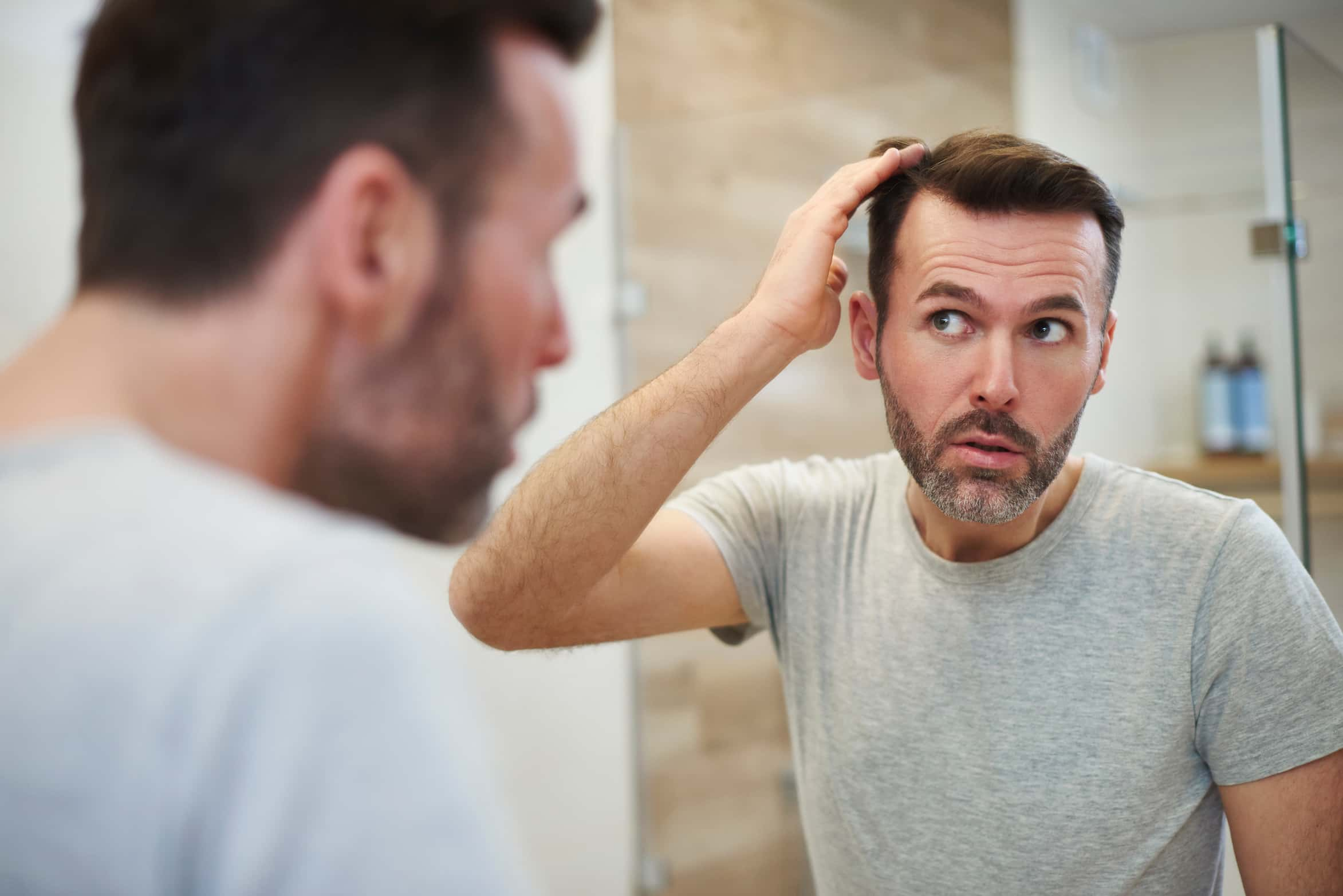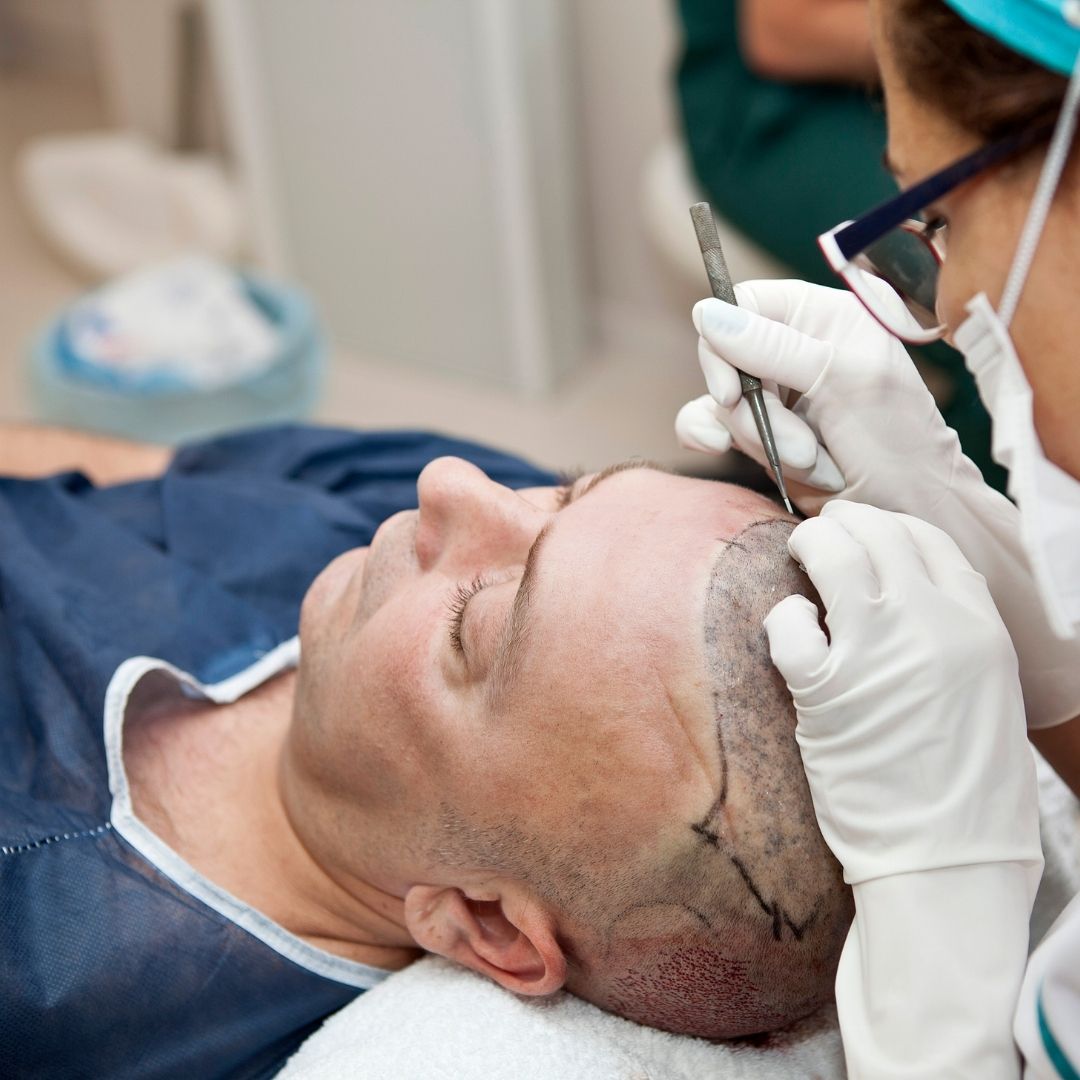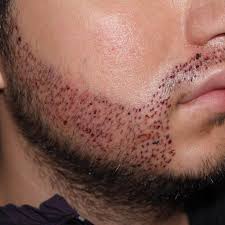
Mature Hairline vs Balding
As men age, changes in their hairline can be a source of concern. While some may assume any hair loss means balding, the truth is that hair loss in men can be due to several factors, including a natural process called a “mature hairline.”
In this article, we’ll explore the difference between a mature hairline and balding, including causes, symptoms, and treatments.
What is a Mature Hairline?
As men age, their hairline can change as the hairline naturally recedes. This process is called a “mature hairline” and typically begins in a man’s early 20s. A mature hairline is not a sign of balding and does not necessarily lead to significant hair loss. It is characterized by a slight recession in the hairline, usually around the temples and forehead, creating a V-shaped hairline.
The symptoms of a mature hairline are relatively mild and typically include a slight recession in the hairline around the temples and forehead. The hairline may appear slightly higher than it did when the individual was younger, but there is no significant hair loss. The hair will still grow normally and cover the scalp.
What is Balding?
Balding, on the other hand, is a condition where hair is lost from the scalp. It can occur in men of any age, but it is most commonly associated with aging. Balding can be caused by a variety of factors, including genetics, hormonal changes, medication, and medical conditions. It is characterized by significant hair loss, often starting at the crown of the head and spreading to other areas.
The symptoms of balding are more severe than those of a mature hairline. Balding typically begins with a receding hairline at the temples and crown of the head, followed by thinning of the hair. As the condition progresses, hair loss may become more noticeable, with the scalp becoming visible in some areas. In severe cases, the hair may fall out completely, leaving the individual completely bald.
Causes of a Mature Hairline
A mature hairline is a natural process that occurs in most men as they age. It is caused by a combination of genetics and hormonal changes. As men age, their testosterone levels decrease, leading to a reduction in the size of hair follicles. This can cause the hairline to recede slightly, creating a more mature look.
Causes of Balding
Balding, on the other hand, can be caused by a variety of factors. Genetics plays a significant role in balding, as it is often hereditary. Hormonal changes, such as those that occur during puberty, pregnancy, and menopause, can also contribute to hair loss. Other factors that can cause balding include stress, medication, and medical conditions such as thyroid disease.
Treatments for Balding
Balding can be a frustrating and distressing condition for many men, but fortunately, there are several treatments available to help slow down or even reverse hair loss. In this section, we’ll explore some of the most common treatments for balding in more detail.
Medications for Balding
There are two medications that are commonly used to treat balding: minoxidil and finasteride. Minoxidil is a topical treatment that is applied directly to the scalp. It works by increasing blood flow to the hair follicles, which can help to stimulate hair growth.
Finasteride is an oral medication that works by blocking the production of a hormone called DHT, which is a major contributor to male pattern baldness. Both medications can be effective in slowing down or even reversing hair loss in some individuals, but they may also have side effects and require ongoing use to maintain their effectiveness.
Hair Transplants for Balding
Hair transplants involve removing hair from one area of the scalp, usually the back or sides of the head, and transplanting it to the balding area. This can be an effective way to restore hair growth, but it is also a surgical procedure that can be expensive and may require several sessions to achieve the desired results. Hair transplant can also be painful and may have some risks associated with them, such as infection or scarring.
Scalp Reduction Surgery for Balding
Scalp reduction surgery involves removing the balding area of the scalp and stretching the remaining skin to cover the area. This can be an effective way to reduce the size of a bald spot, but it is also a surgical procedure that can be painful and may have some risks associated with it, such as bleeding, infection, or scarring.
Low-Level Laser Therapy for Balding
Low-level laser therapy (LLLT) is a non-invasive treatment that involves using a device that emits low-level lasers onto the scalp. This can help to stimulate hair growth by increasing blood flow to the hair follicles. LLLT is a relatively new treatment for balding, and its effectiveness is still being studied. However, some studies have shown that it can be effective in slowing down hair loss and promoting hair growth.
Platelet-Rich Plasma Therapy for Balding
Platelet-rich plasma (PRP) therapy involves injecting a patient’s own blood, which has been processed to contain a high concentration of platelets, into the scalp. The platelets contain growth factors that can help to stimulate hair growth. PRP therapy is a relatively new treatment for balding, and its effectiveness is still being studied. However, some studies have shown that it can be effective in promoting hair growth.
There are several treatments available for balding, each with its own benefits and risks. It is essential to speak with a doctor or a hair specialist to determine the best course of treatment for your individual case. By working with a healthcare professional, you can find a treatment that is both safe and effective, helping you to restore your confidence and feel good about your appearance once again.
Treatments for a Mature Hairline
There is no treatment necessary for a mature hairline, as it is a natural process that does not require medical intervention. Individuals who are concerned about their changing hairline can try different hairstyles that can help cover up the receding hairline. Alternatively, they can embrace their new, more mature look.
The Study of Mature Hairline vs Balding
A recent study conducted by the International Journal of Dermatology examined 500 men aged 25 to 45 to distinguish between a mature hairline and balding. The study found that a mature hairline, characterized by a subtle recession around the temples and forehead, was prevalent in men as they aged, with no significant hair loss. On the other hand, balding was found to be associated with a noticeable receding hairline, crown hair loss, and thinning of the hair. This study underscores the importance of differentiating between a natural mature hairline and signs of balding.
Baldness with Healthy Türkiye is not Destiny
Understanding the difference between a mature hairline and balding is essential for men concerned about their changing hairlines. A mature hairline is a natural process that does not require treatment, while balding is a condition that can be caused by several factors and may require medical intervention.
If you are concerned about hair loss, you contact Healthy Türkiye and schedule a free consultation with our doctor or hair specialist to determine the cause and the best course of treatment for your individual case.



